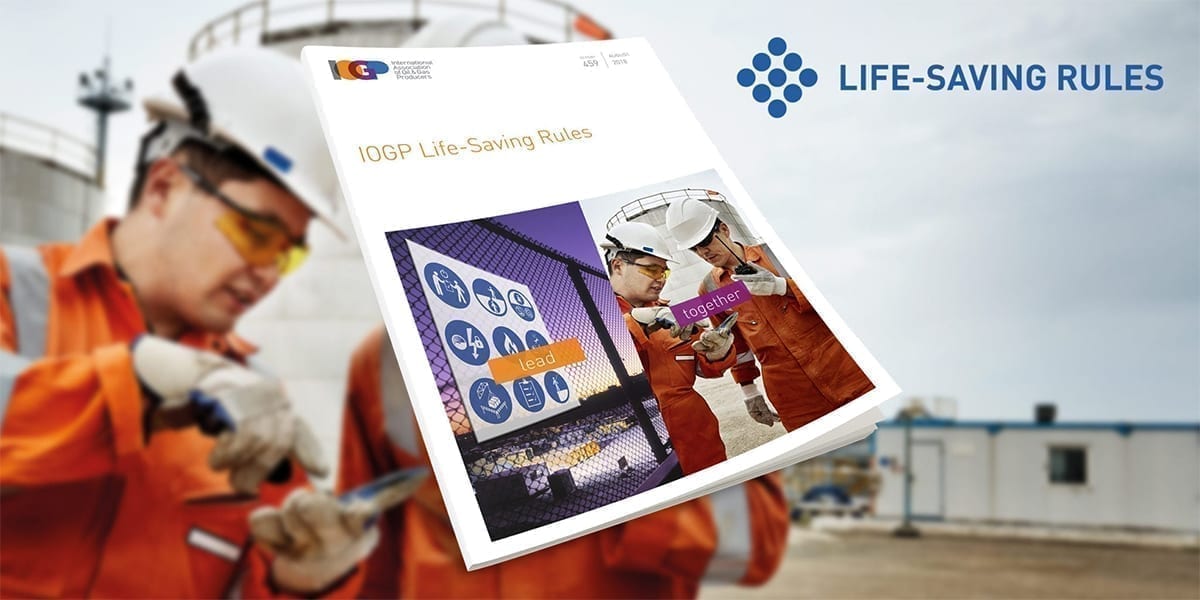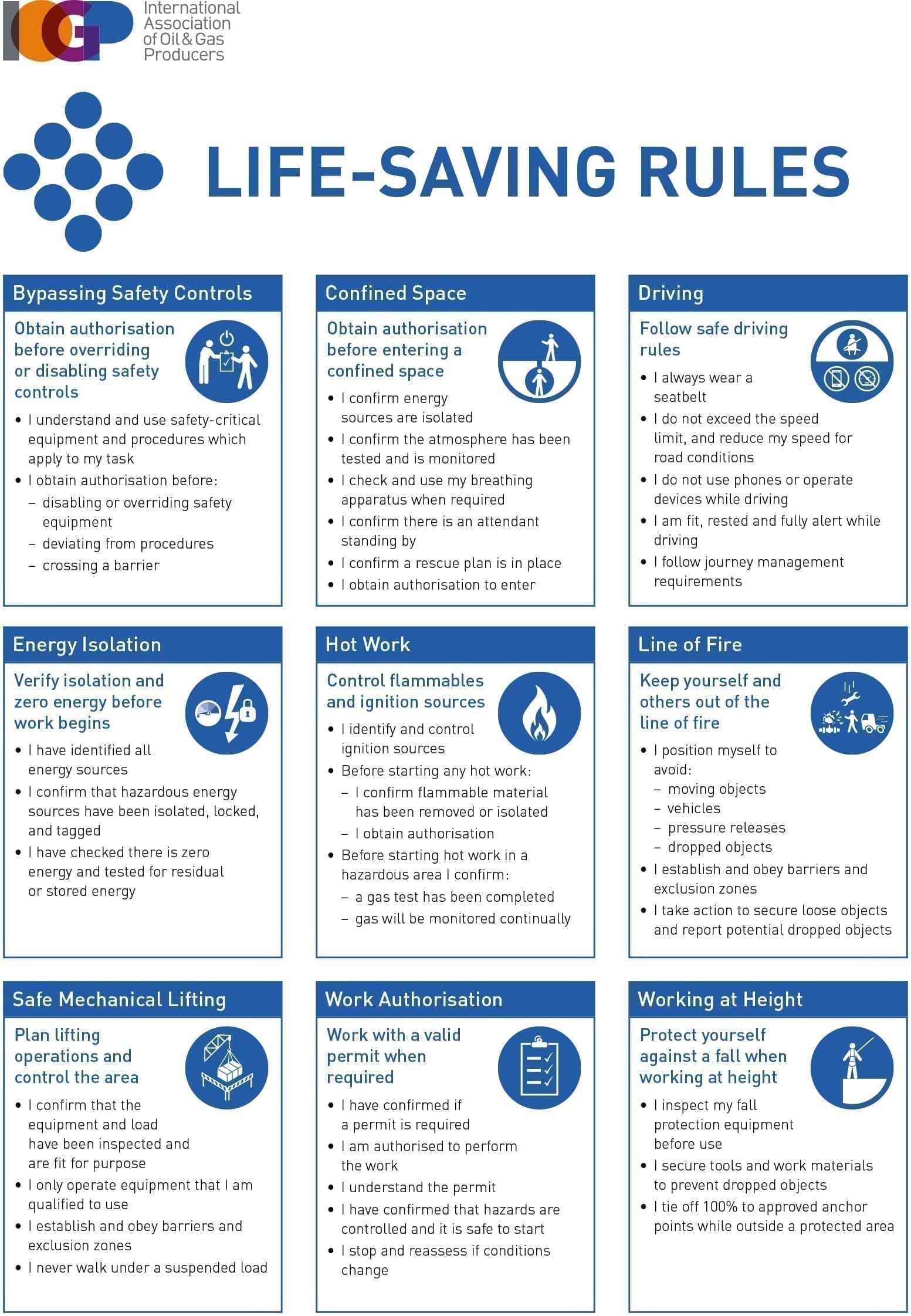
When the world is rightly focussed on saving lives during the current pandemic, it is worth remembering that there are other causes of fatalities – and proven ways to prevent them.
For the upstream oil and gas industry, IOGP’s Life-Saving Rules (LSR) are among the most effective.
They are also the Association’s most frequently downloaded sets of guidance. In the past year, people within the industry and beyond have downloaded the Rules more than 5,600 times. Moreover, IOGP’s LSR webpage has attracted 40,000 visits during the last 12 months – this is over 100 visits per day.
Why do the Rules continue to be in such demand so long after their launch?
Simplicity, relevance, and practicality are some of the reasons. Each of the nine Rules highlights a key action to prevent fatal injuries during activities that research has shown to be high-risk. Aimed at individual workers, every Rule is geared to a specific task. The full portfolio is shown here:

One of the great LSR benefits is their uniformity in application. “There is a lot of value in having everybody with the same understanding. Whether you go to an installation or facility operated by Schlumberger, Total, Shell or any number of companies, everybody is talking the same LSR language. This is true whether workers are speaking English, Arabic, Chinese, French — or any of the other nine tongues in which LSR videos are presented so far,” says IOGP Safety Director Olav Skår. More translations are to come, he adds.
“The Rules do save lives,” Olav says. “We have the evidence. The challenge is in getting more and more people to buy into the concept. Effective implementation is crucial.”
Some of the tried and tested ways of putting the Rules to work include:
- Toolkit talks and safety meetings, often focusing on real-life cases in which one or more Rules were not followed.
- Pre-job planning, where workers identify tasks that involve any of the Rules and determining how best to follow them from start to finish, including an assessment of good working conditions.
- Last minute risk assessment, which provides a second opportunity to check that all actions agreed at the pre-job planning stage have been done and all the necessary conditions are in place. It is also the time to ensure that there are no line of fire hazards or ignition sources not originally identified.
- Post-job reviews that analyse whether all the necessary LSR actions were taken and also assess what went well and what didn’t. These reviews can and should inform the handling of future tasks.
- Observations and walk-abouts give workers the opportunity to spot any LSR-relevant activities and either commend adherence to the Rules or intervene if they are being flouted. Such intervention is crucial to maximising LSR benefits.
According to detailed analysis of IOGP’s annual Safety Performance Indicators, the Rules – and interventions to ensure they were being followed – could have saved the lives of some 400 people during the past ten years.
“Every loss of life is a tragedy, but when one occurs – let alone 400 – that could have been prevented by following one or more of our Rules, the tragedy somehow seems worse,” Olav says. “But I’m optimistic,” he concludes. “Given the growing interest that our industry is showing in the Rules, more people can be confident of finishing their working day by returning safe and sound to their family and friends. As an Association, that’s our prime objective and always has been.”



